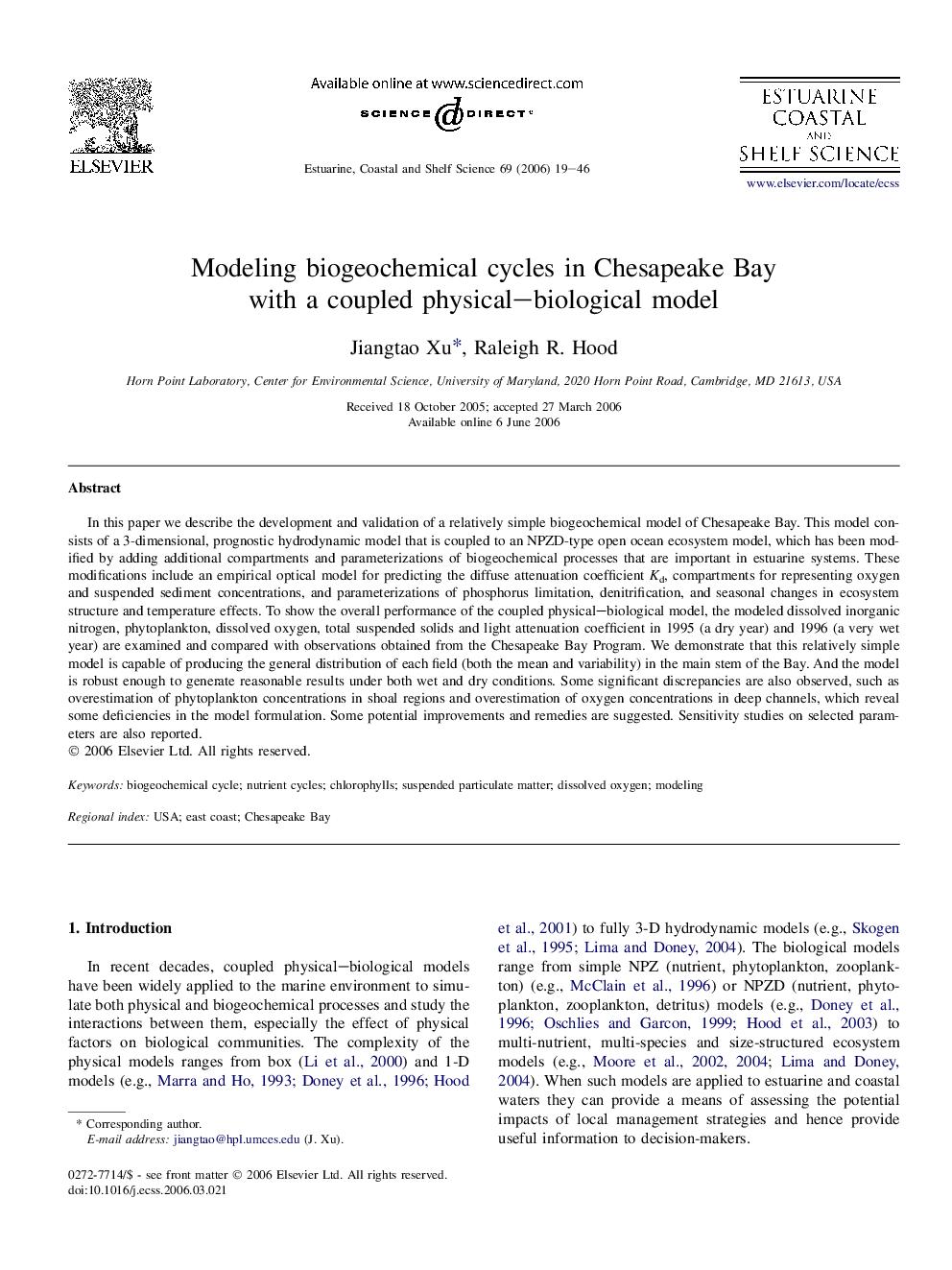| Article ID | Journal | Published Year | Pages | File Type |
|---|---|---|---|---|
| 4542195 | Estuarine, Coastal and Shelf Science | 2006 | 28 Pages |
In this paper we describe the development and validation of a relatively simple biogeochemical model of Chesapeake Bay. This model consists of a 3-dimensional, prognostic hydrodynamic model that is coupled to an NPZD-type open ocean ecosystem model, which has been modified by adding additional compartments and parameterizations of biogeochemical processes that are important in estuarine systems. These modifications include an empirical optical model for predicting the diffuse attenuation coefficient Kd, compartments for representing oxygen and suspended sediment concentrations, and parameterizations of phosphorus limitation, denitrification, and seasonal changes in ecosystem structure and temperature effects. To show the overall performance of the coupled physical–biological model, the modeled dissolved inorganic nitrogen, phytoplankton, dissolved oxygen, total suspended solids and light attenuation coefficient in 1995 (a dry year) and 1996 (a very wet year) are examined and compared with observations obtained from the Chesapeake Bay Program. We demonstrate that this relatively simple model is capable of producing the general distribution of each field (both the mean and variability) in the main stem of the Bay. And the model is robust enough to generate reasonable results under both wet and dry conditions. Some significant discrepancies are also observed, such as overestimation of phytoplankton concentrations in shoal regions and overestimation of oxygen concentrations in deep channels, which reveal some deficiencies in the model formulation. Some potential improvements and remedies are suggested. Sensitivity studies on selected parameters are also reported.
